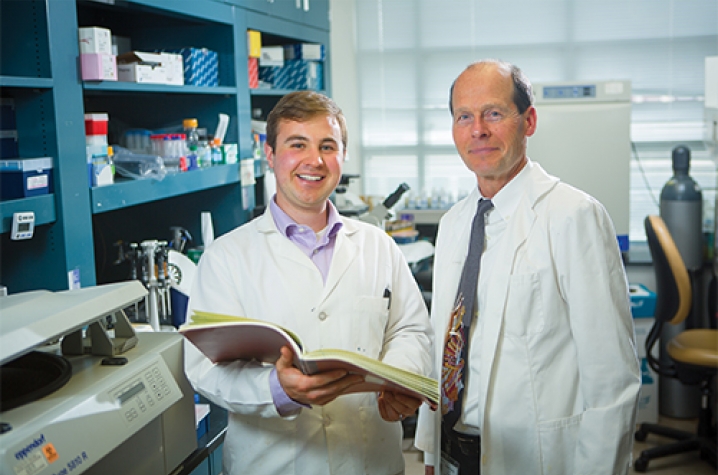UK Superfund Center Identifies Potential Link Between Pollutants and Human Disease Risk
LEXINGTON, Ky. (June 29, 2016) — Appalachian Kentucky has some of the highest rates of chronic diseases like cancer, cardiovascular disease and diabetes in the country. Researchers at the University of Kentucky's Superfund Research Center (SRC), which is supported through the National Institute of Environmental Health Sciences (NIEHS), are interested in understanding how exposure to environmental pollutants and poor diet and nutrition may interact to increase the risk of these diseases in people living in Appalachia and other at-risk populations.
Michael Petriello, a postdoctoral fellow working with UK Superfund Research Center faculty Bernhard Hennig, director of the UK SRC, and Andrew Morris, of UK HealthCare's Division of Cardiovascular Medicine with a joint appointment at the Lexington VA (Veterans Affairs) Medical Center, recently discovered a mechanism that may link exposure to environmental pollutants to increased human disease risk.
"A goal of our work is to identify human populations that are highly sensitive to pollutant-induced disease," Petriello said.
In laboratory experiments, Petriello found that exposure to a class of pollutants called polychlorinated biphenyls (PCBs) can increase levels of an enzyme in the liver that generates a metabolite in the blood called tri methylamine N-oxide (TMAO). PCBs are persistent organic pollutants that remain in the environment although their manufacture and use is now banned. Several large studies in humans have shown that circulating levels of TMAO are a powerful risk factor for heart disease. These observations may be relevant to other widespread classes of environmental pollutants termed dioxins and dioxin-like chemicals because these pollutants could also increase levels of a liver enzyme critical for TMAO production in lab models.
“Dr. Petriello’s research clearly shows that exposure to PCBs increases the circulating levels of TMAO, a biomarker of increased risks for cardiovascular disease," Hennig said.
The UK SRC group is now working with researchers at the Centers for Disease Control (CDC) and Prevention to see if the relationship between exposure to environmental pollutants and circulating TMAO levels observed in the lab also happens in people.
"Once we identify interactions between diet and toxicology, such as this observed link between TMAO and PCBs, we may be better equipped to educate and engage the public on ways to minimize risk," Petriello said.
Hennig added, “What makes Dr. Petriello’s discoveries significant is the fact that we can now use biomarkers like TMAO to estimate the cardiovascular risk of PCB exposure in humans."
According to the UK scientists, the research findings contain some good news. TMAO is formed by metabolism of dietary lipids that are particularly rich in meat and dairy products. Petriello’s study suggests that healthy diets that reduce consumption of these lipids to decrease TMAO levels might be particularly beneficial for people who are exposed to these kinds of pollutants.
This work has already generated substantial interest. In addition to a recent publication reporting the results of his studies, Petriello recently won an award for presentation of this work at the European Atherosclerosis Society Meeting in Innsbruck, Austria. And, the UK team has been invited to make a presentation about their work at the upcoming international Dioxin Symposium in Florence, Italy.
Petriello, Hennig and Morris have received additional grant support from the NIEHS, which is part of the National Institutes of Health (NIH), to pursue their studies of the link between environmental pollutants and TMAO with Sudha Biddinger of the Harvard Medical School and Boston Children's Hospital. Biddinger is a physician scientist who is an expert on the enzyme that makes TMAO in the liver.
“Dr. Petriello received a NIEHS/NIH/SRP research supplement and is spending this summer at Harvard Medical School to study further our hypothesis that PCB-induced increases in TMAO can be a novel mechanism linking nutrition, exposure to environmental pollutants, cardiovascular disease, and other metabolic disorders,” Hennig said.
UK is the University for Kentucky. At UK, we are educating more students, treating more patients with complex illnesses and conducting more research and service than at any time in our 150-year history. To read more about the UK story and how you can support continued investment in your university and the Commonwealth, visit uky.edu/uk4ky. #uk4ky #seeblue
MEDIA CONTACT: Carl Nathe, 859-257-3200; carl.nathe@uky.edu
Kara Richardson, 859-327-2825; kara.richardson@uky.edu








